Skrócona instrukcja obsługi
Szybki start/rozpakowywanie.
Witamy wszystkich na naszym kanale! Ten film to przewodnik, jak szybko i łatwo skonfigurować system Larnitech. Konfiguracja zostanie wykonana za pomocą walizki demonstracyjnej. Zestaw szkoleniowy obejmuje walizkę demonstracyjną ① oraz pudełko z kilkoma dodatkowymi elementami ②.
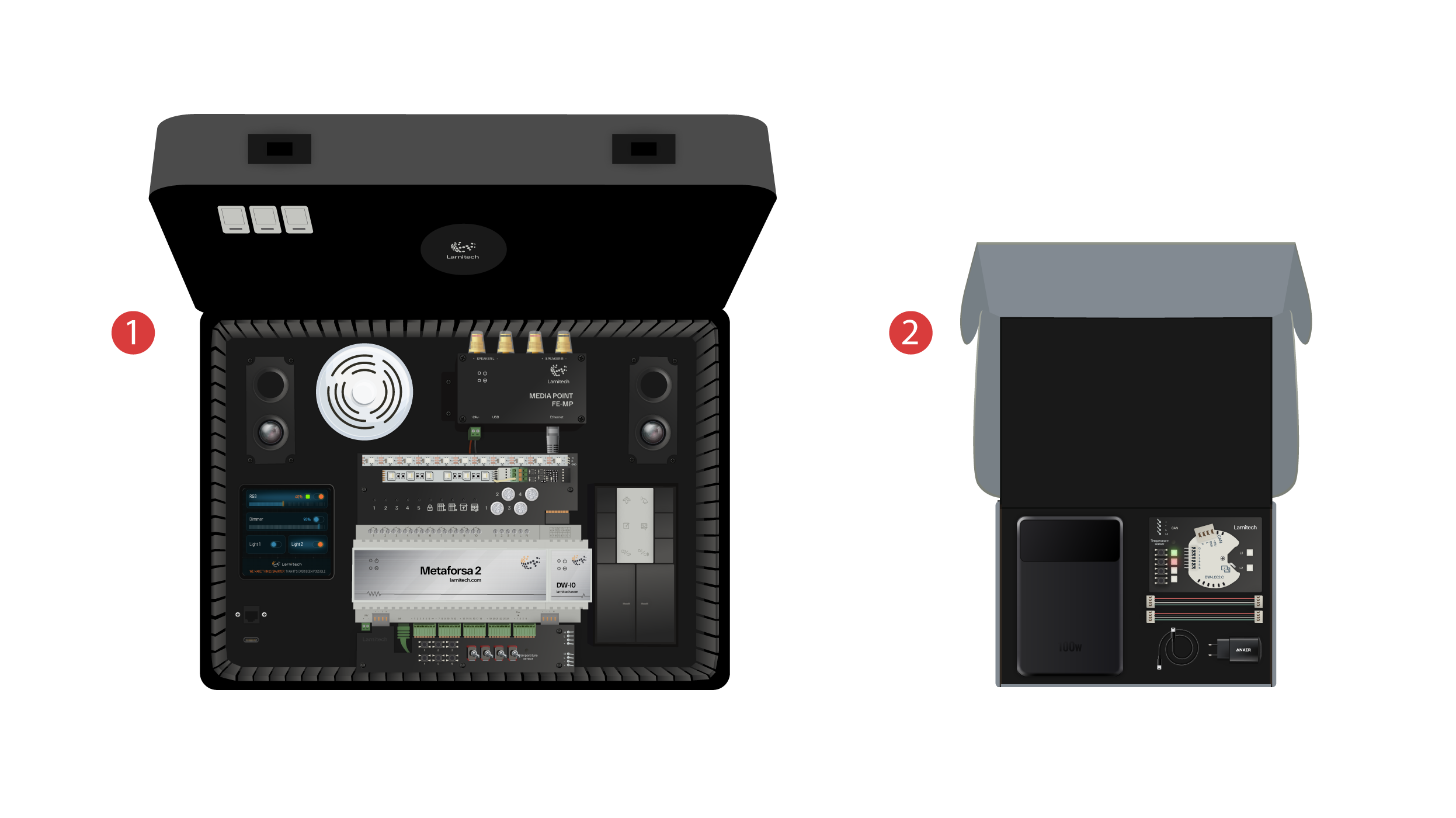
Pudełko mieści w sobie następujące elementy:
① - Jednostka zasilająca z portem USB typu C, obsługująca technologię Power Delivery;
② - Power bank z wyświetlaczem i portem wyjściowym typu C, który można użyć do zasilania walizki demonstracyjnej;
③ - Kabel typu C z wskaźnikiem zużycia energii;
④ - 2 kable CAN bus;
⑤ - Płyta demonstracyjna mieszcząca moduł BW-LC02 z 2 diodami LED, 4 przyciskami z podświetleniem i podłączonym do niego czujnikiem temperatury.
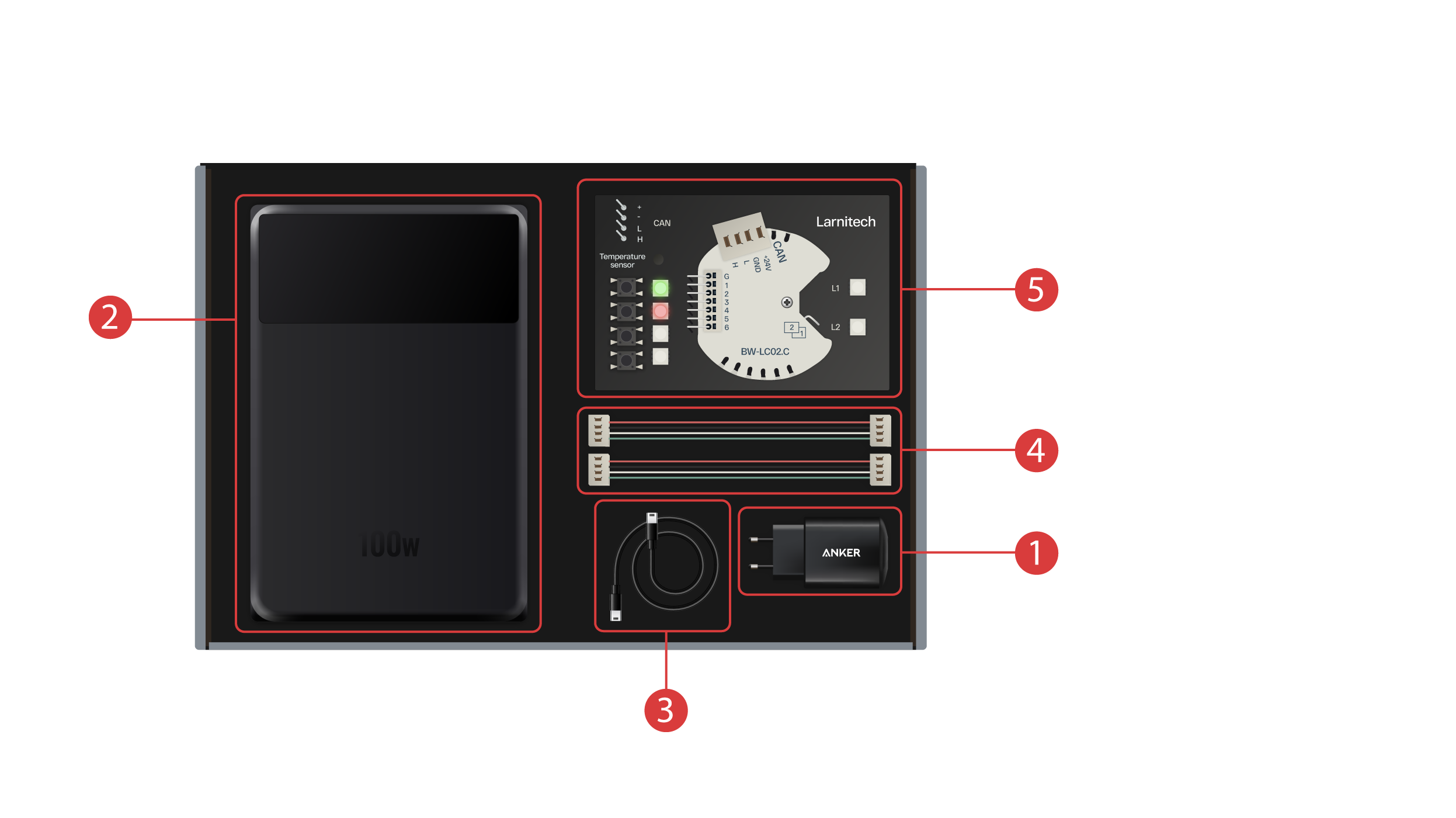
Walizka demonstracyjna zawiera:
Moduł „Metaforsa 2”, który posiada:
① - 10 kanałów przekaźnikowych z podłączonymi diodami LED, wskazującymi ich aktualny status;
② - 4 kanały regulowane z podpiętymi diodami LED;
③ - 24 kanały wejściowe, z 6 przyciskami ④ i 4 przełącznikami ⑤ podłączonymi do nich w celu imitacji różnych czujników;
⑥ - Kanały wejściowe dla czujników temperatury;
⑦ - CAN bus do podłączania dodatkowych urządzeń. Pozostałe moduły walizki demonstracyjnej są z nim skomunikowane, jak również 2 porty ⑧ do przyłączenia zewnętrznych urządzeń.
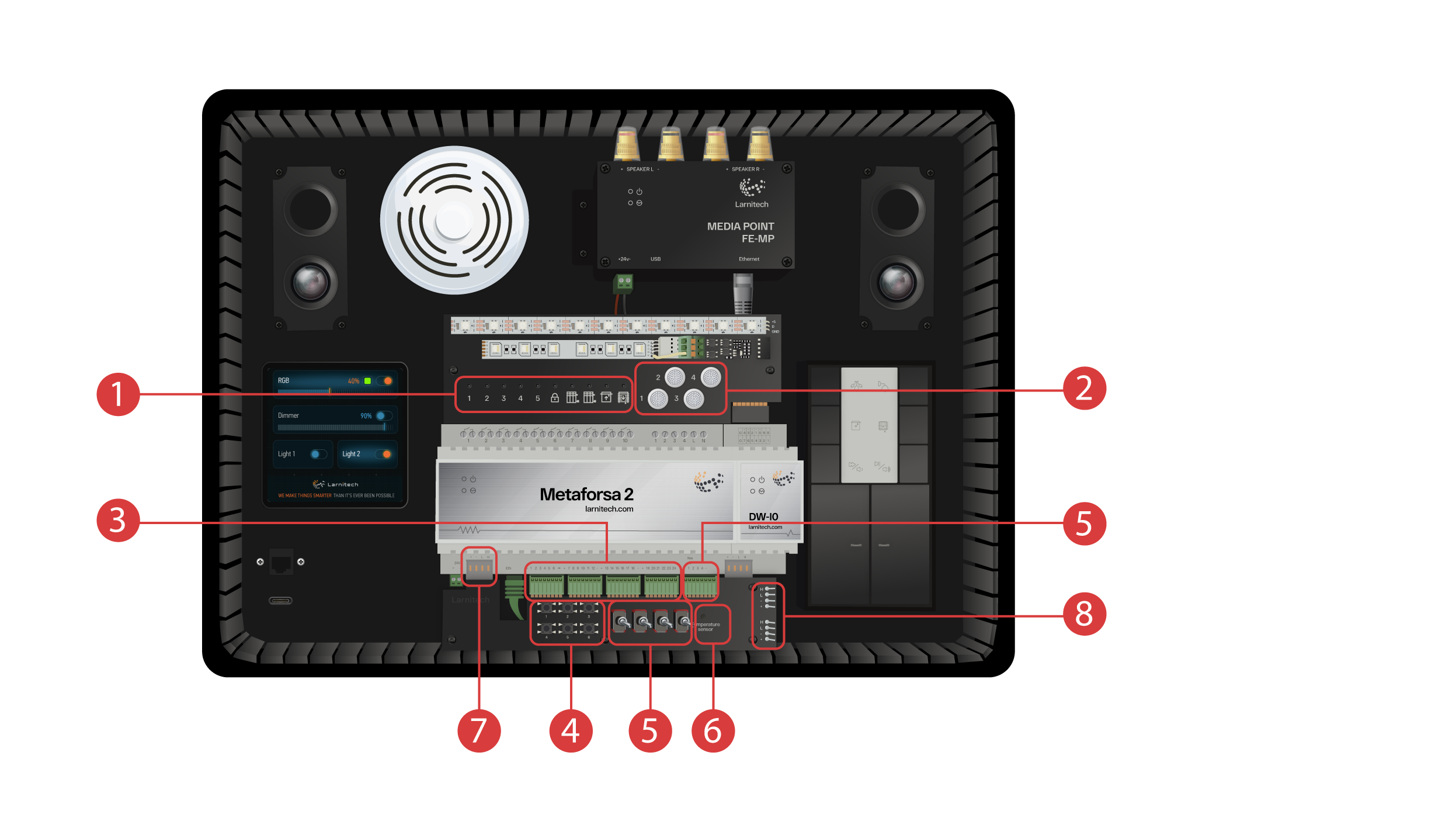
Moduł DW-IO
Moduł wyposażony jest w 14 uniwersalnych kanałów wejścia/wyjścia, z którymi związane są różnorodne elementy:
① - 4-kanałowy pasek RGBW, który podłączony jest za pomocą wzmacniacza prądowego AMP5V-4 ②;
③ - Pasek z diodami LED o indywidualnym adresowaniu. Każda z tych diod LED może świecić we własnym kolorze;
④ - Czujnik temperatury;
⑤ - I dwa przyciski z podświetleniem.
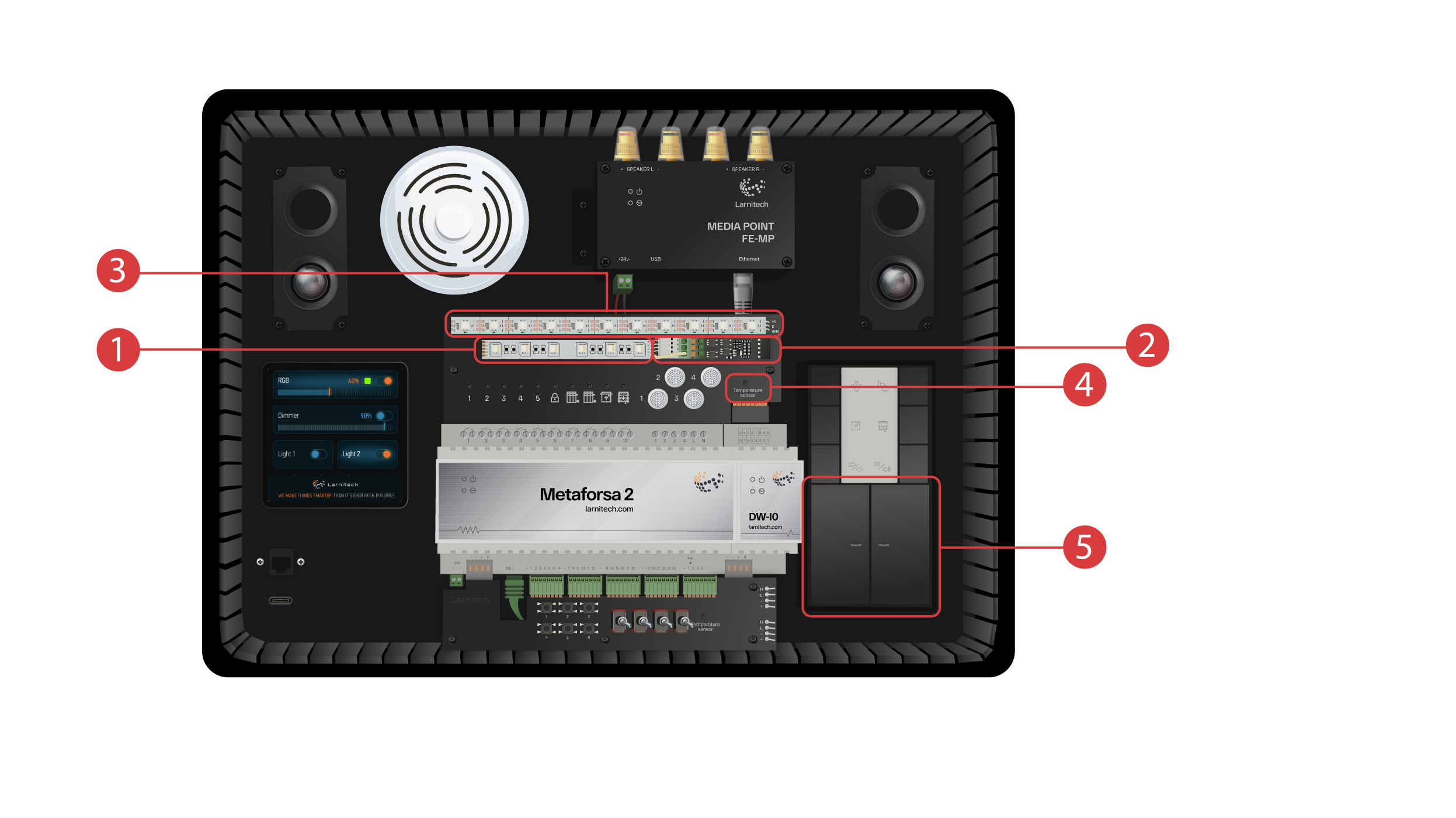
W skład walizki demonstracyjnej wchodzą również poniższe elementy:
① - Media Point FE-MP z ② dwoma głośnikami;
③ - Czujnik sześciu parametrów CW-CO2, który mierzy: Poziom ruchu, Oświetlenie, Temperaturę, Wilgotność, Poziom CO2 i który posiada nadajnik podczerwieni;
④ - 4-calowy panel dotykowy LCP4, mogący wyświetlać standardowy interfejs lub interfejs dostosowany do paneli ściennej;
Moduł sterowania przyciskiem BW-SW24 połączony z 24-voltową klawiaturą JUNG ⑤.
A także router Wi-Fi, który może być podłączony do internetu za pomocą portu Ethernet ⑥ na przednim panelu walizki lub poprzez dostępną sieć Wi-Fi.
Do zasilania służy port typu C ⑦ znajdujący się na przednim panelu.
Wszystkie urządzenia zainstalowane w walizce są zasilane napięciem 20 V, co jest całkowicie bezpieczne dla użytkownika.
Podłącz kabel zasilający i kabel Ethernet. W przypadku braku takiej możliwości, w dalszej części filmu przedstawimy, jak skonfigurować wbudowany router i połączyć go z Twoją siecią Wi-Fi.
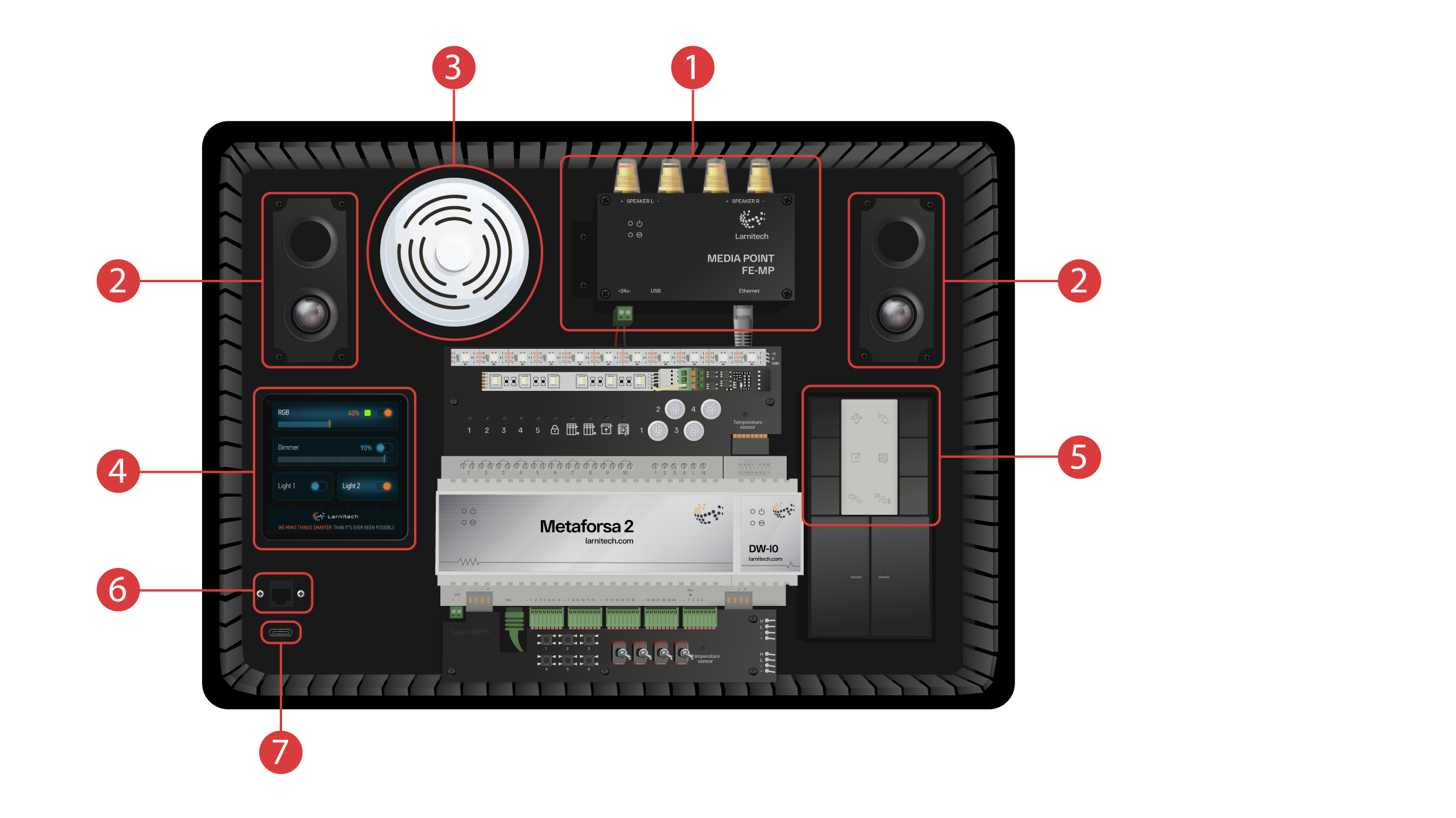
Aby kontynuować, należy zainstalować aplikację Larnitech na smartfonie lub tablecie. Wystarczy zeskanować pierwszy kod QR z góry na Twojej walizce.
Jeśli po zainstalowaniu i uruchomieniu aplikacji połączenie nie zostanie automatycznie nawiązane, będziesz musiał przyłączyć się do sieci Wi-Fi „Larnitech_case_5G” za pomocą swojego urządzenia mobilnego. Następnie uruchom aplikację i zeskanuj pierwszy kod QR w sekcji „Connections”.
W przypadku gdy walizka demonstracyjna nie jest podłączona do Internetu, możesz potrzebować wyłączyć przesyłanie danych na swoim urządzeniu mobilnym.

Główny ekran aplikacji zawiera kilka kluczowych elementów. W lewym górnym rogu znajduje się menu „wybór obszaru” ①.
Kliknij jeden z nich, aby nim zarządzać ②.
Znajdują się tam ikony, które pozwalają wybrać wykonawców, czujniki, klimat, multimedia, piloty i kamery ③. W prawym rogu umiejscowiona jest ikona dodatkowego menu ④. Wewnątrz niej można także zobaczyć status aktualnego połączenia.
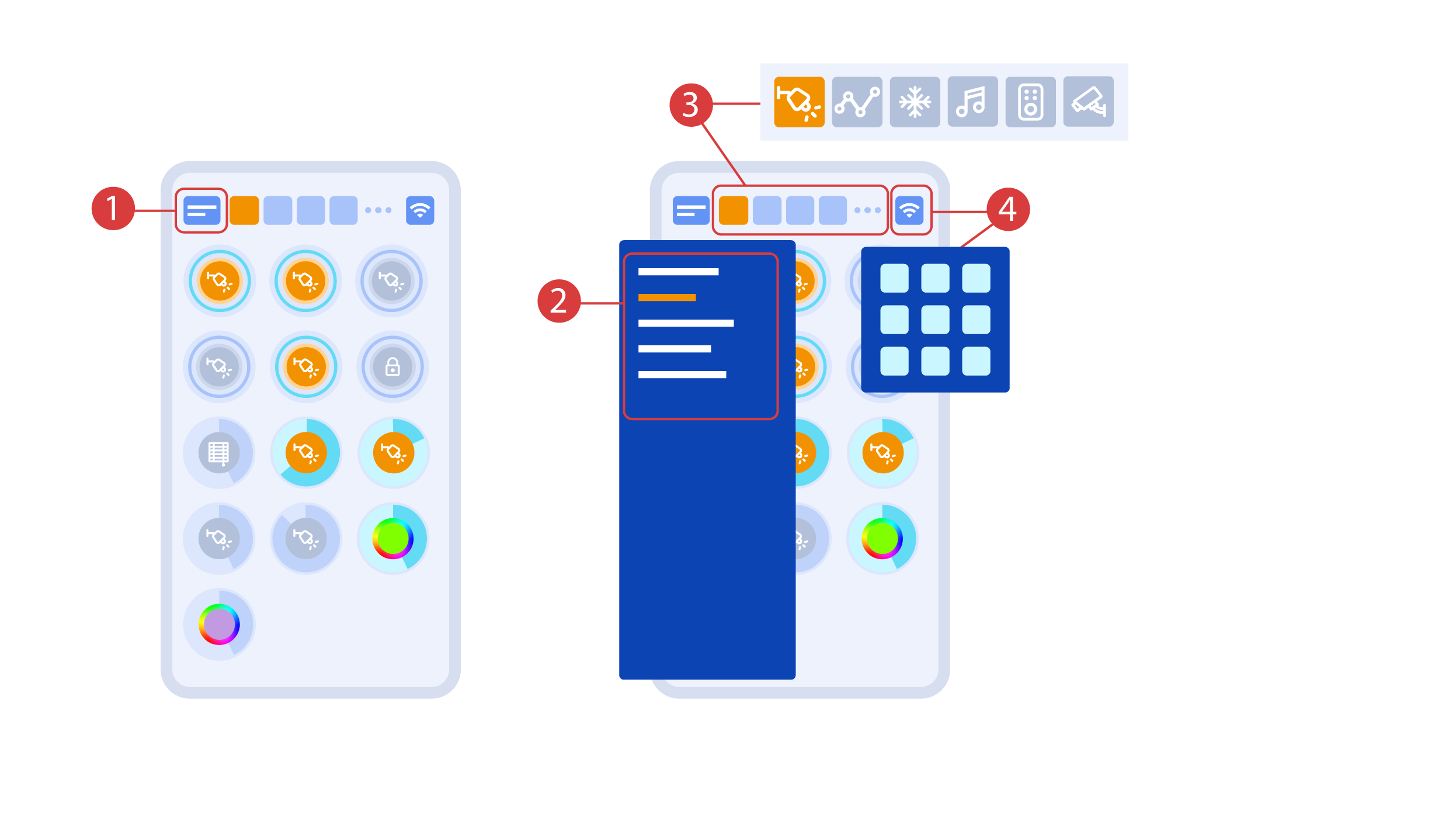
Włączenie lub wyłączenie ① Aby zmienić poziom oświetlenia ②, kolor świateł lub pozycję żaluzji, kliknij dwukrotnie. W celu uzyskania dostępu do historii ③ statusu tego wykonawcy lub czujnika, przytrzymaj ikonę przez jedną sekundę.
Krótkie naciśnięcie fizycznych przycisków na panelu włącza lub wyłącza światło. Naciśnij i przytrzymaj przycisk, aby zmienić jasność światła.
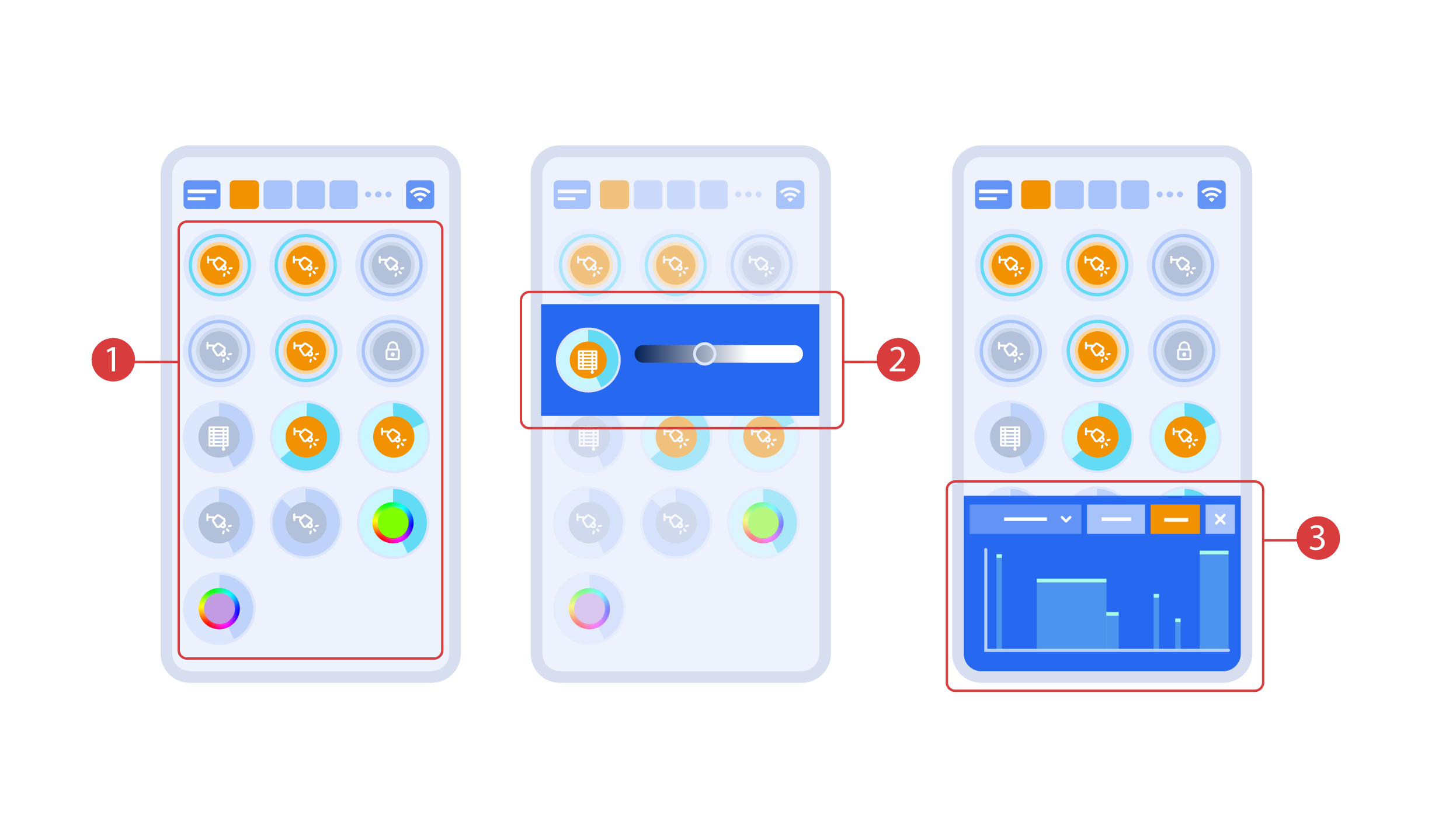
In order to demonstrate the Plug and Play function, we open the executors in the Setup area ① and connect the module to the CAN bus. The system automatically detects the new module and adds it to the ‘Setup’ area, ② where we are able to control the new module instantly.
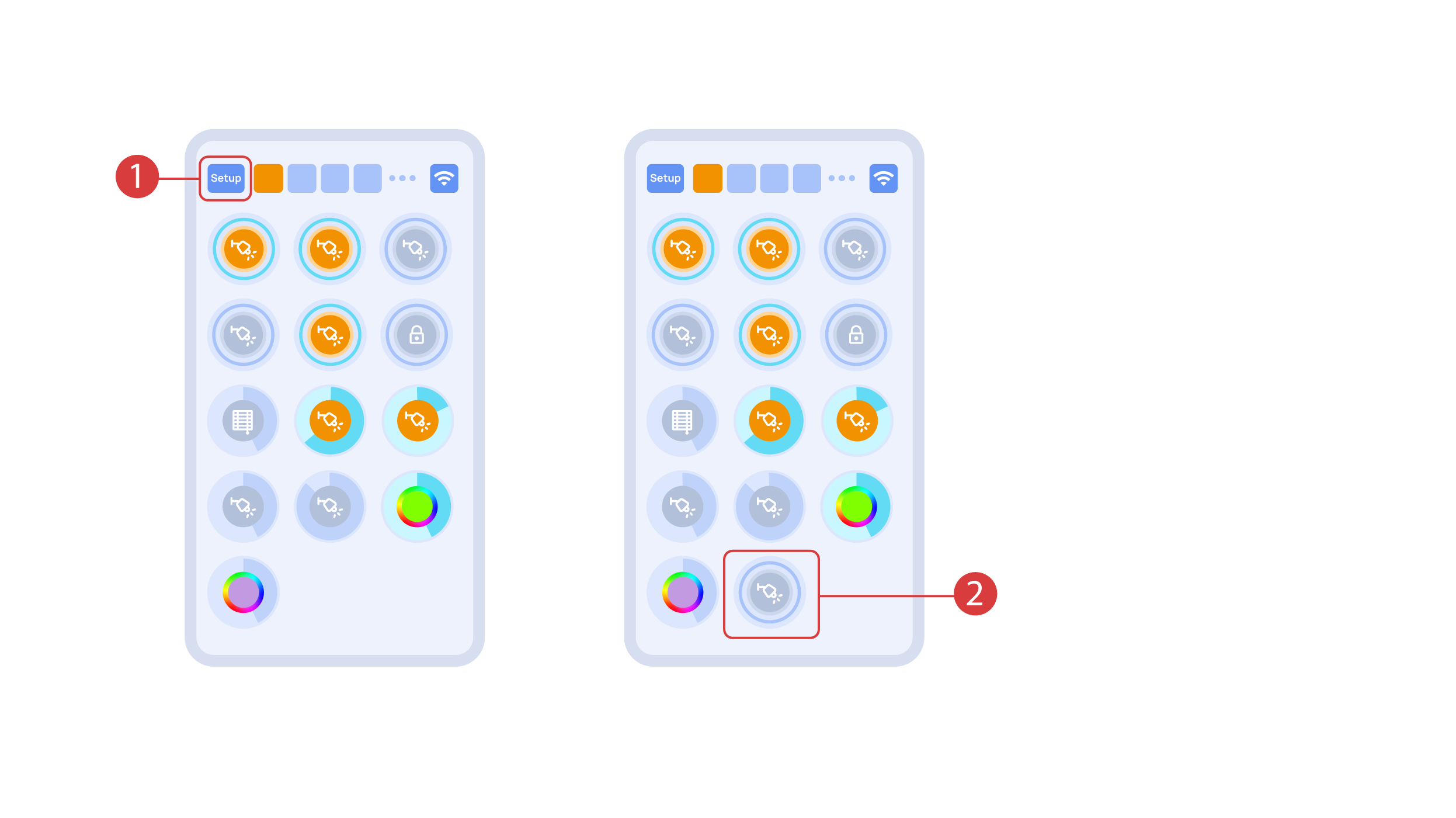
Now we can set up these executors. In order to do this, enter the additional menu ① and activate the edit mode, by pressing the appropriate icon .
Now we are in the edit mode ②, which can be seen from the appropriate notification in the top part of the screen. In this mode, when we press and hold an icon, we can move it among other elements and place it into another Room by placing it in the Area-choosing Menu and then choosing the area that we need. A long press ③ of the element starts the menu, from which we set up the current element.In the ‘General’ ④ section we can change the name of the element, add a voice command for it, change an icon or add the element to ‘Favorites’.
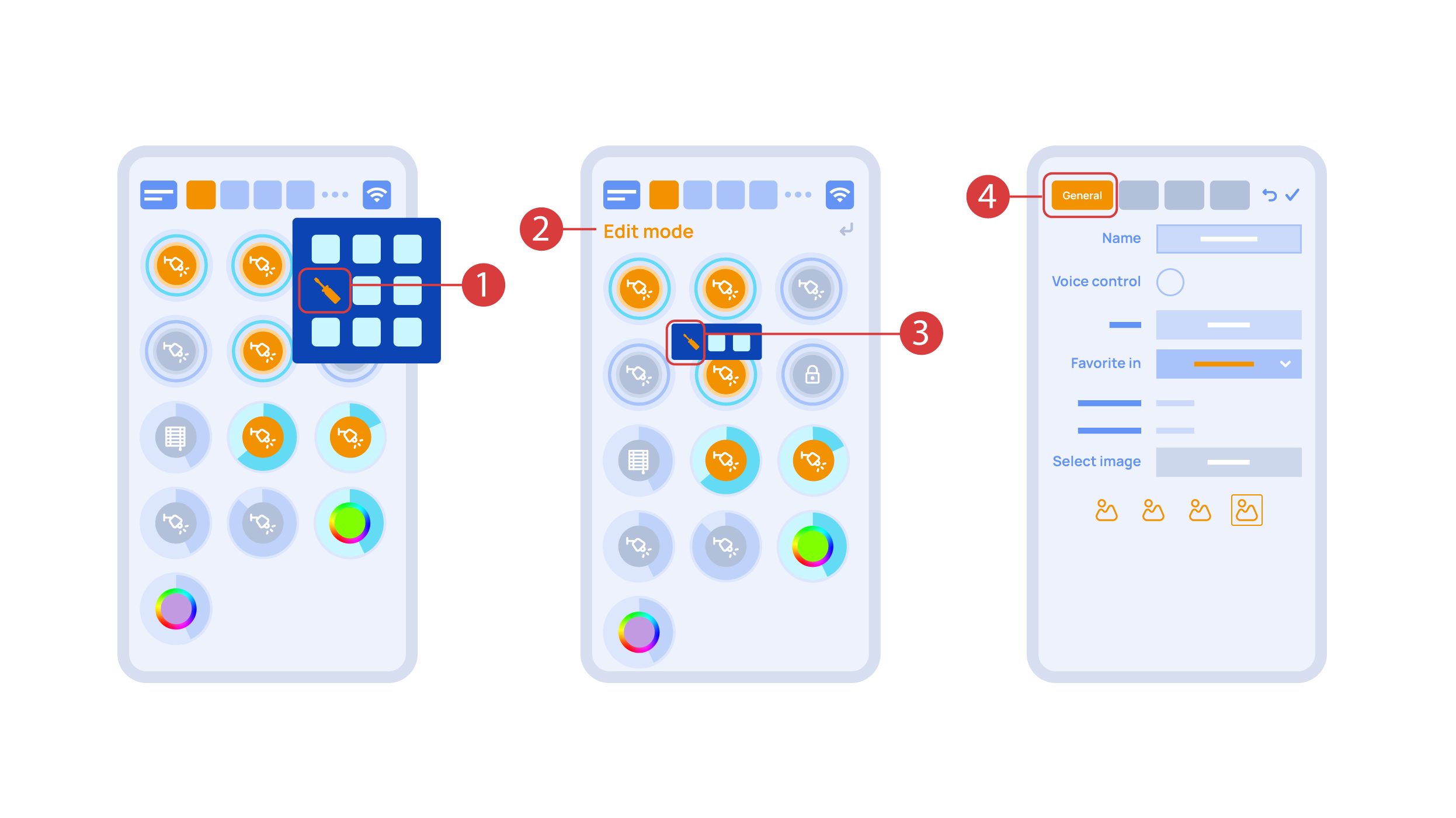
‘Auto’ section ① lets us activate the automation with a few clicks, as well as set up its parameters.
In the ‘schedule’ section ②, you can determine the schedule when the given element will turn on or off, including by using the time of the setting and rising of the sun.
The ‘Switches’ tab ③ lets you bind a button to control the executor.
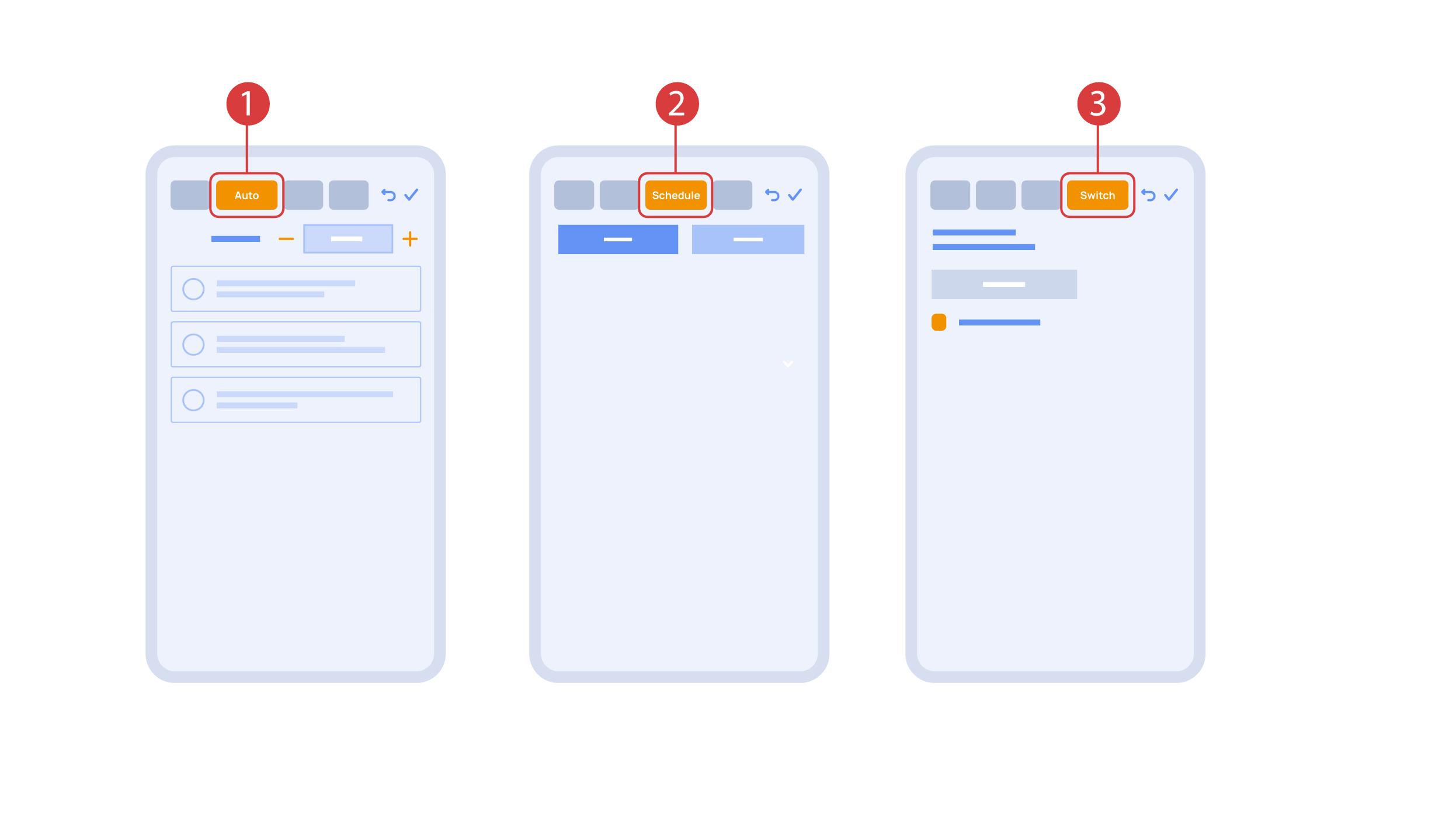
In order to do this, ① we press the button we need to bind. The system displays it, after which we press ‘Bind’② and save the changes. Now this button controls the executor
The ‘Switches’ tab ③ also features additional button setup options. For example, we can program the executor to be controlled with a double or triple click of a button, as well as define an action performed by this, for example ‘only turning on’ or ‘only turning off’ an executor. In this case we are setting up the button to do the following: one click will cause the lamp to toggle, a double click will turn it on and a triple click will turn it off. In this way a single button can perform up to five different actions.
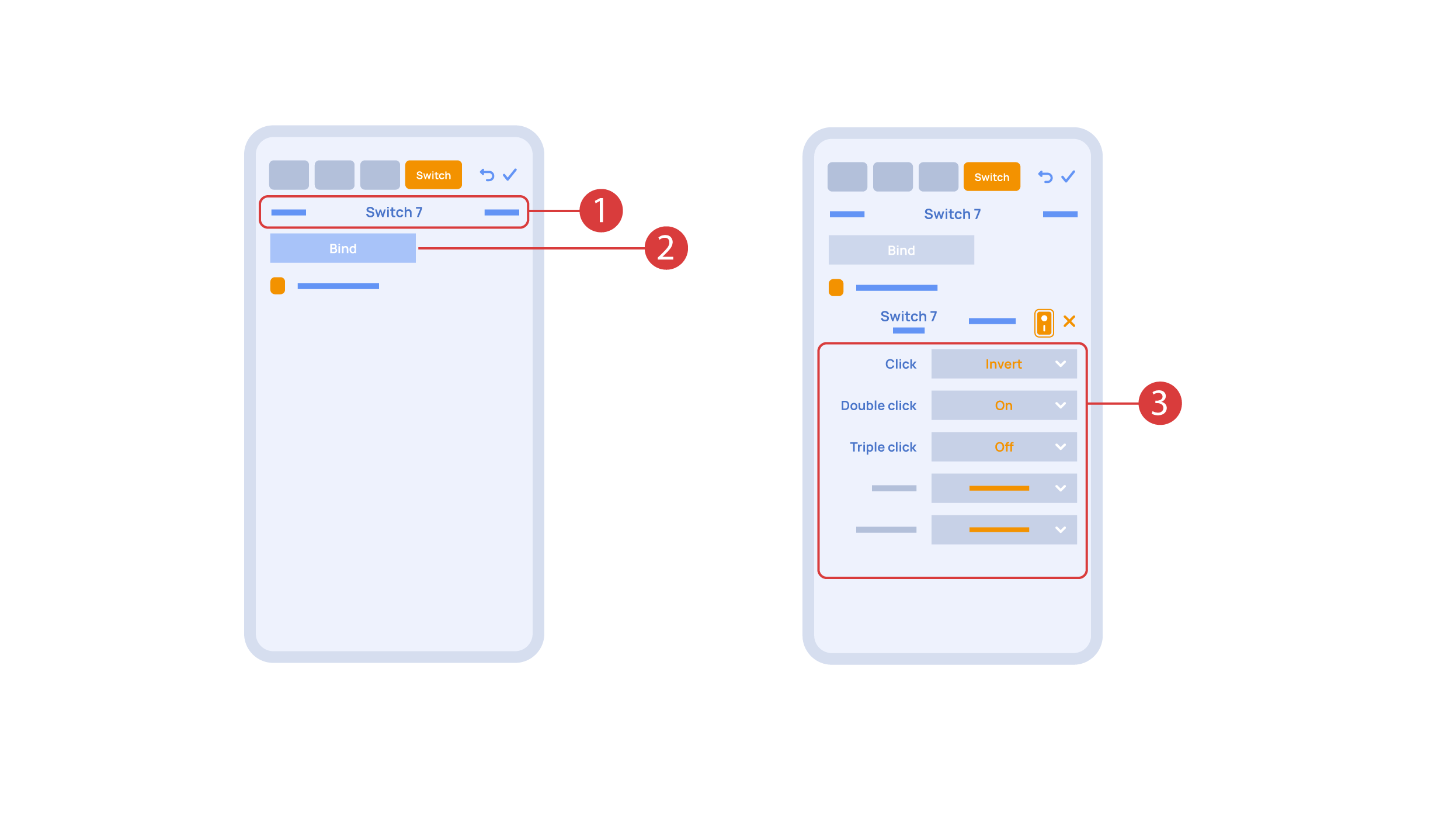
Let’s also set up basic automation of turning an executor on or off with the help of a motion sensor.
The ‘Auto period’ ① option sets the time for which the automation is disabled after an executor is manually controlled.For our demonstration purposes, we will set it to zero.
Then we will activate the automation ② to turn on the executor when motion is detected. We choose the motion sensor ③ and the level of motion ④. We can also choose a light sensor and its parameters.
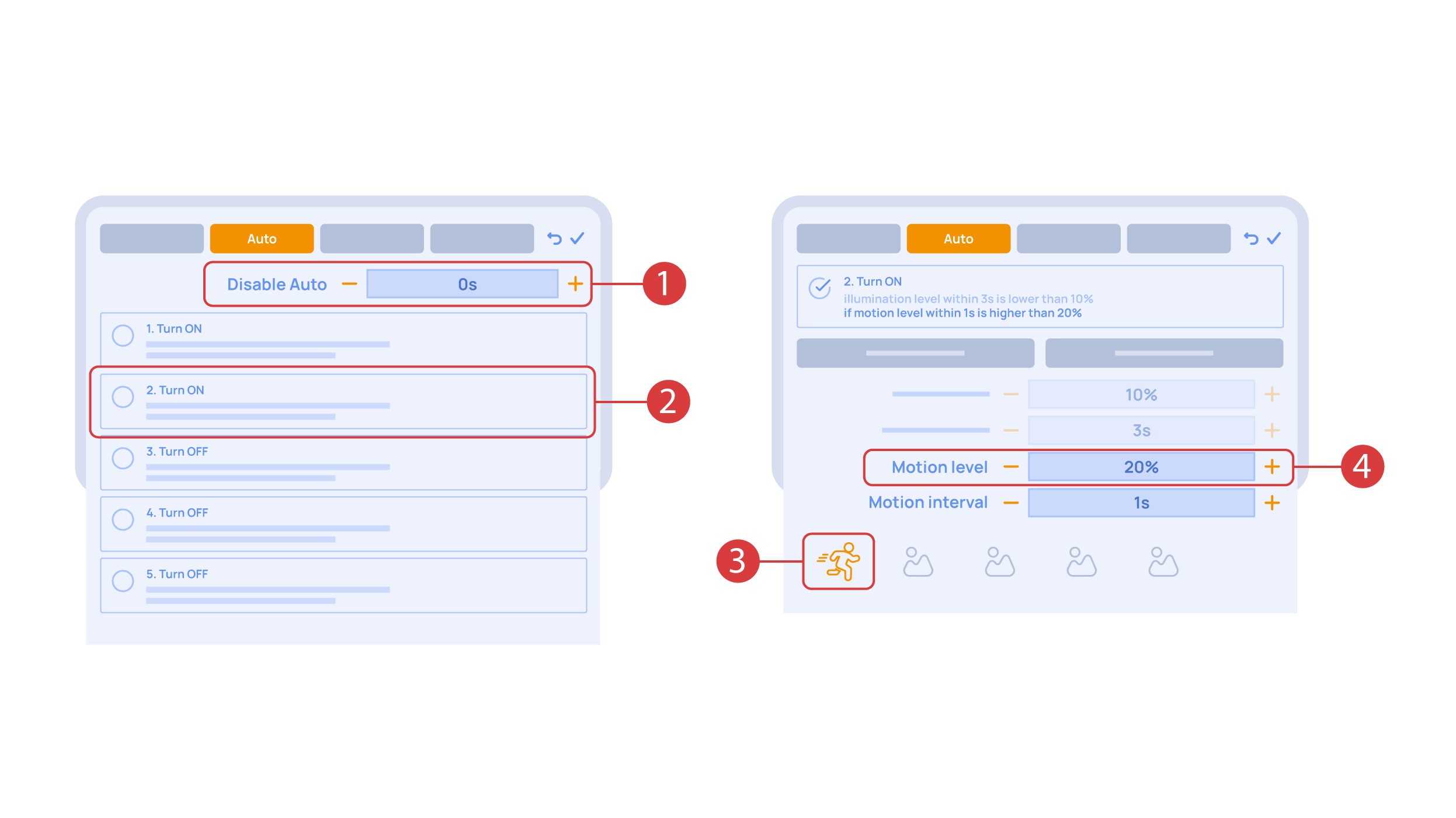
Now we will activate turning off ① of an executor if there is no motion: we choose the same sensor, set a lower threshold and a minimal time.Save the changes.
The extra ‘A’ icon ② will be added to the executor icon, meaning that automation has been set up for it. Now the lamp will be turned on when motion is detected and instantly turned off when no motion is detected.
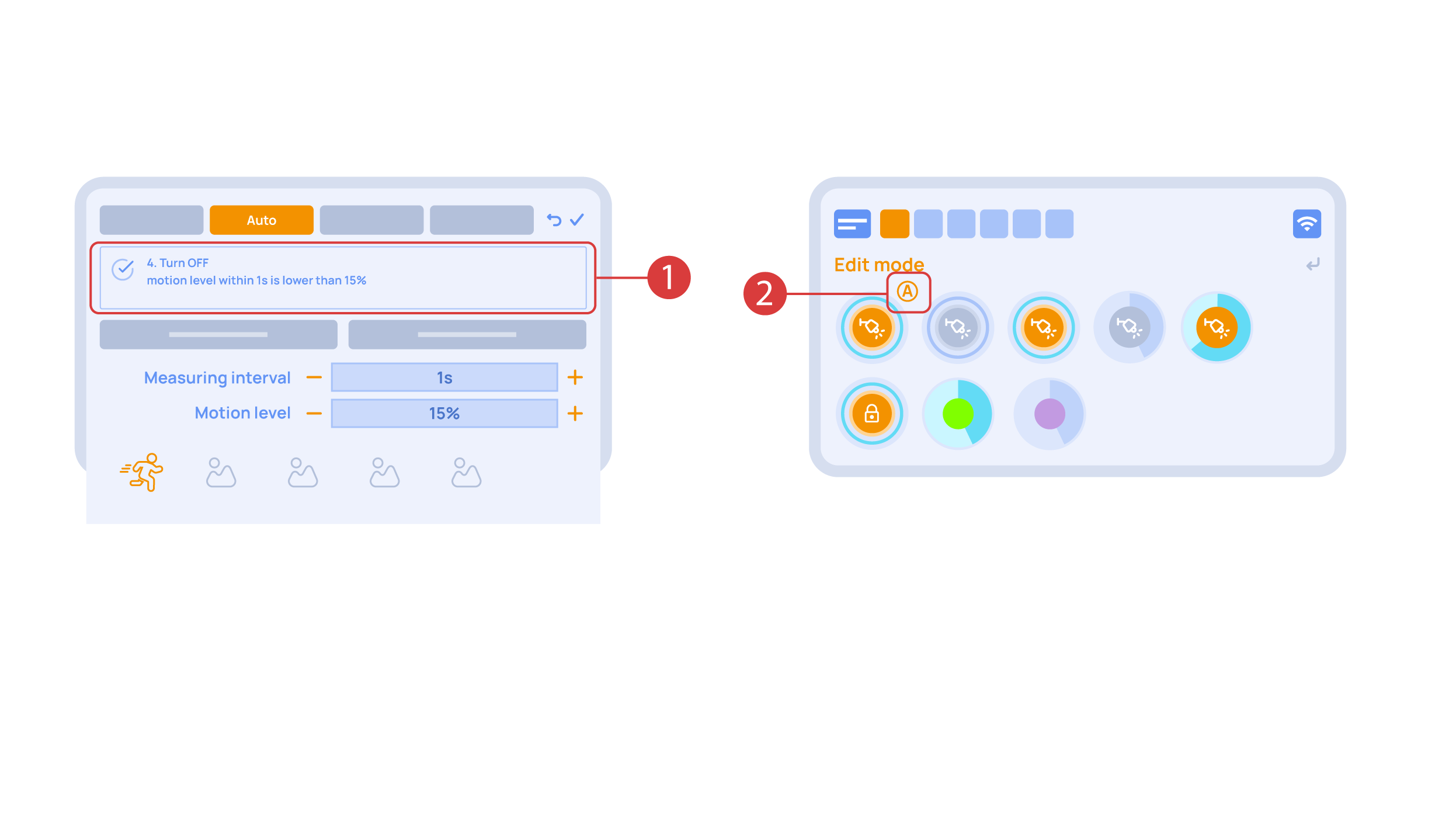
Let’s create a light scheme. For this we need to select the appropriate item in the additional menu ①. Give the light scheme a name ②.
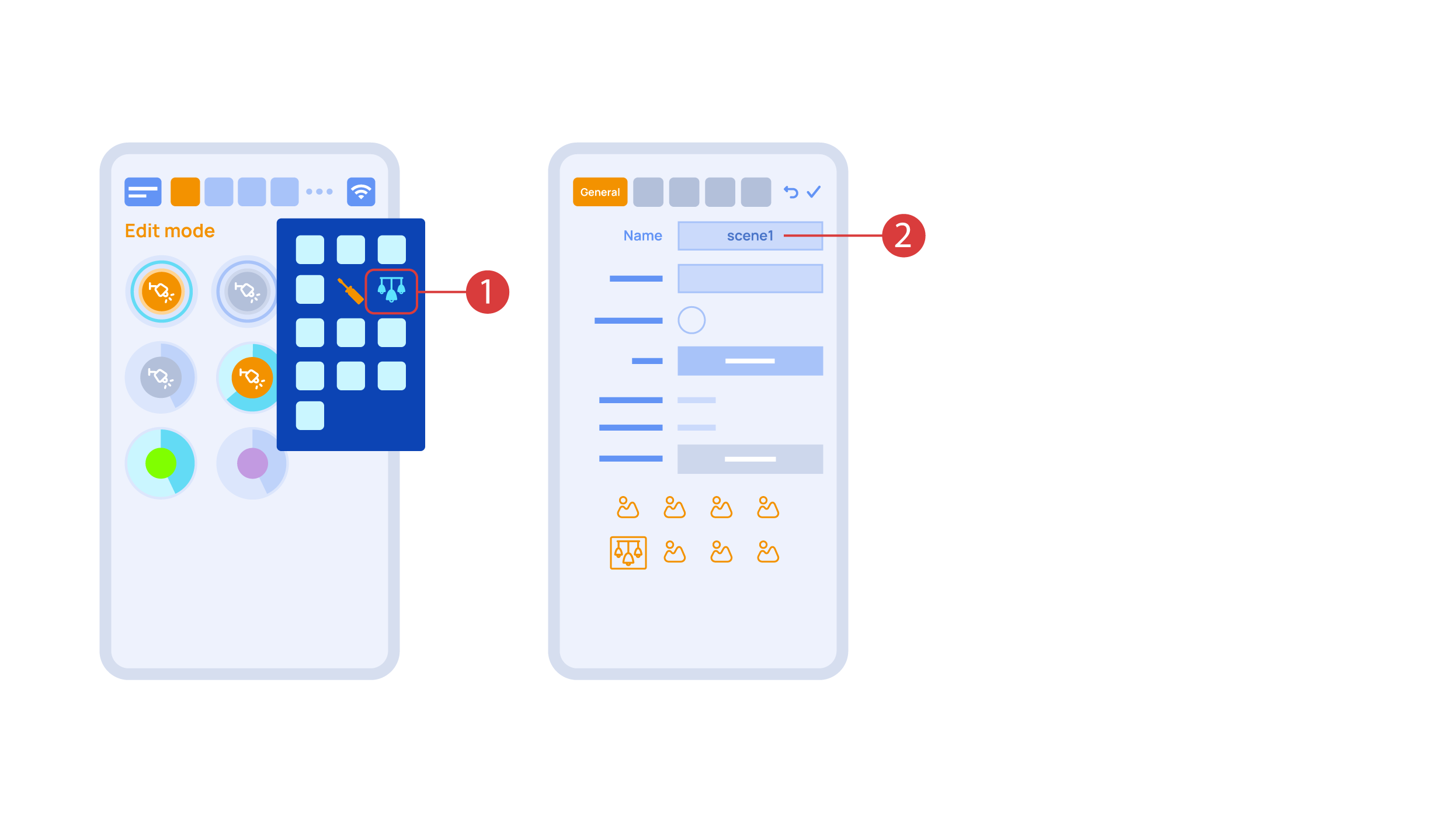
In the ‘State’ tab, use a long press to add the lights we want to use into the light scene ① and set up their state ②. ‘Auto’, ‘Schedule’, ‘Switch’ tabs are the same for all the executors.
Save the changes and we are able to use the newly-created light scheme ③ immediately.
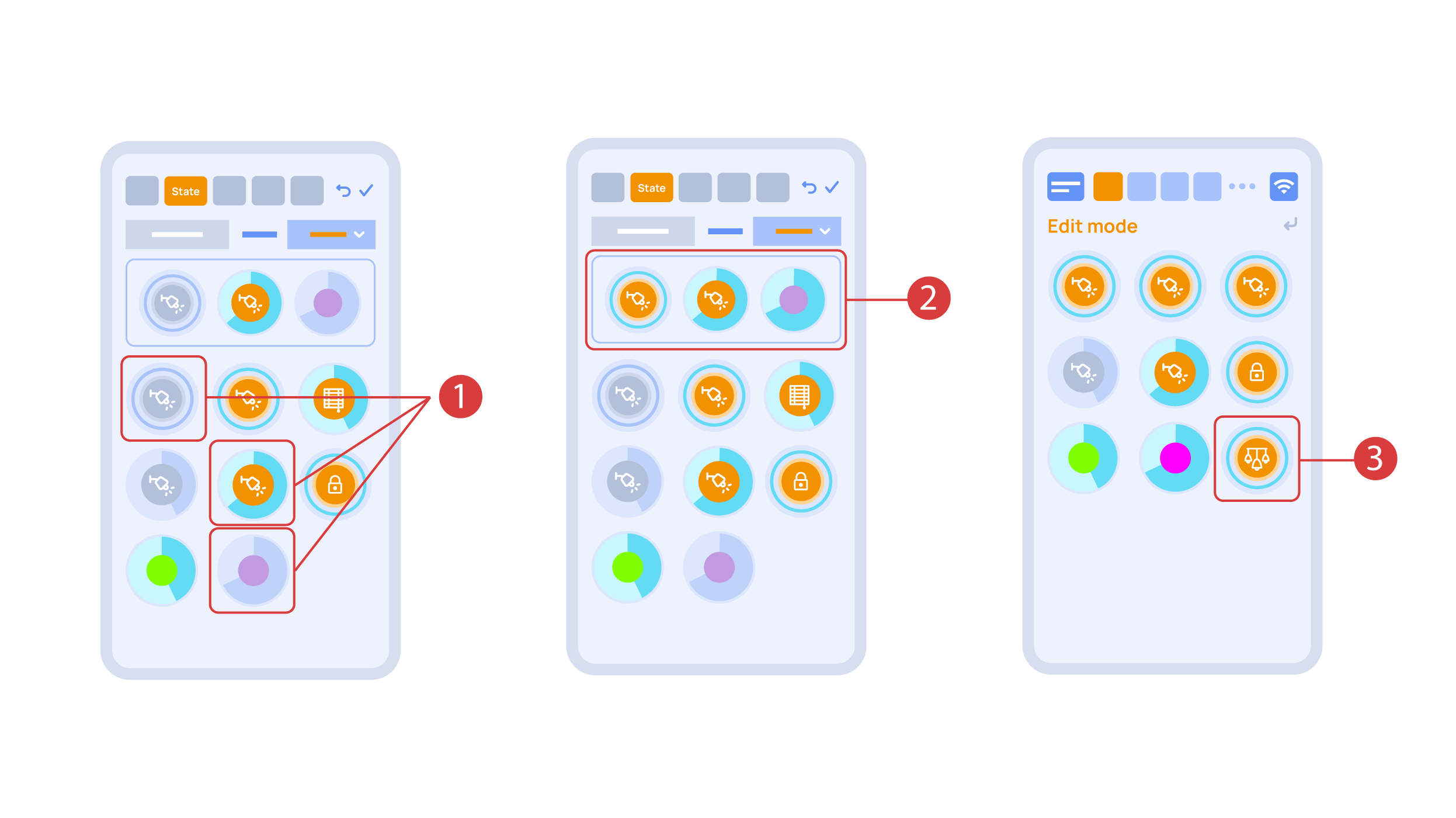
While you are in the Edit Mode, there is a ‘Setup’ ① icon in the additional menu.
Here in the ‘Structure’② tab we can see all the areas.
We can create new ones ④, rename them and move the elements around.
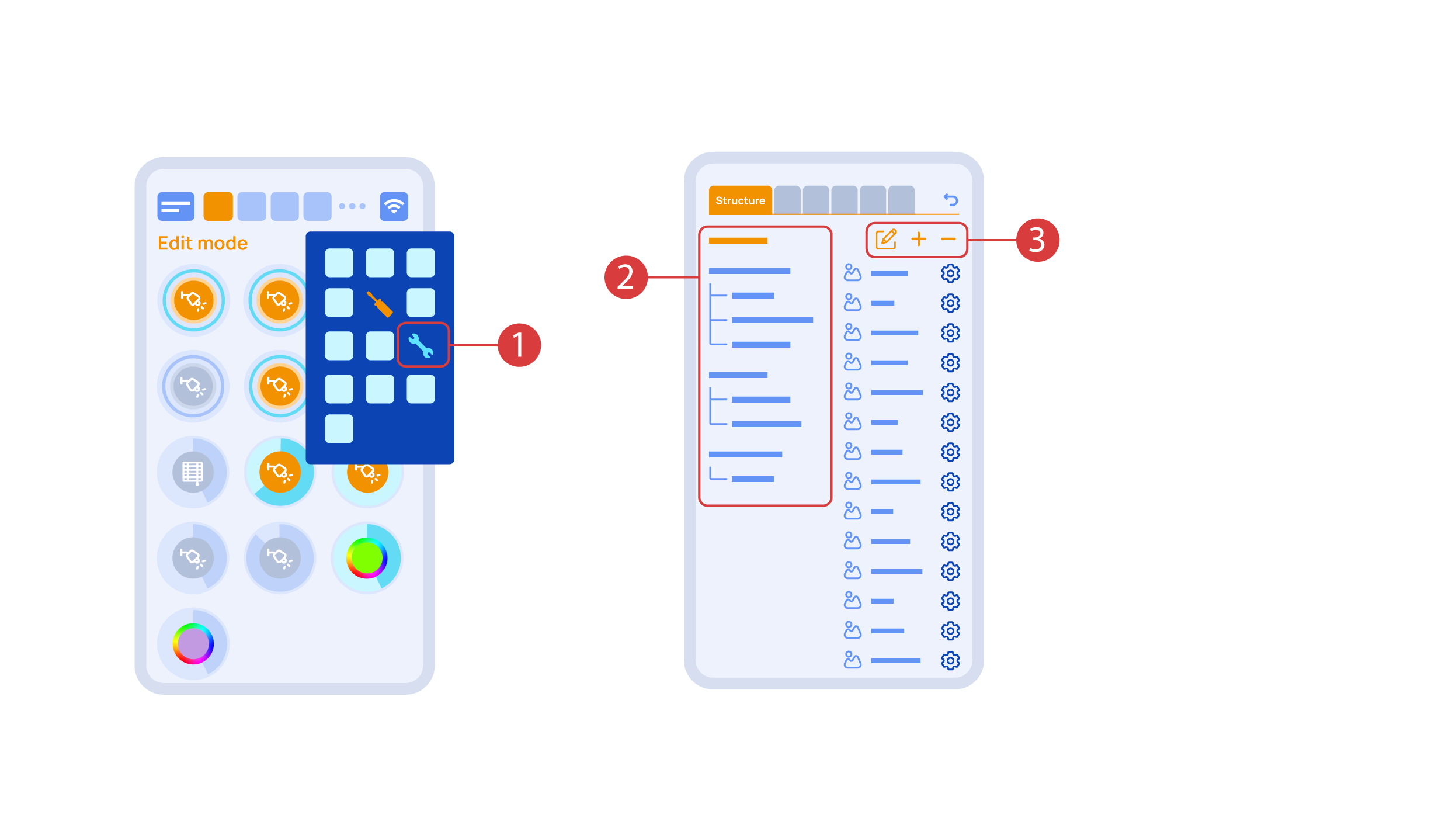
In the ‘Mikrotik’ tab ① you can see the current parameters of your router, which you can also connect to your local Wi-Fi network.
In order to do this, enter the Wi-Fi sub-menu, click the wlan1 interface configuration ②, after which choose the ‘station’ mode, choose a Wi-Fi network out of the list ③ of available ones and enter the connection password.
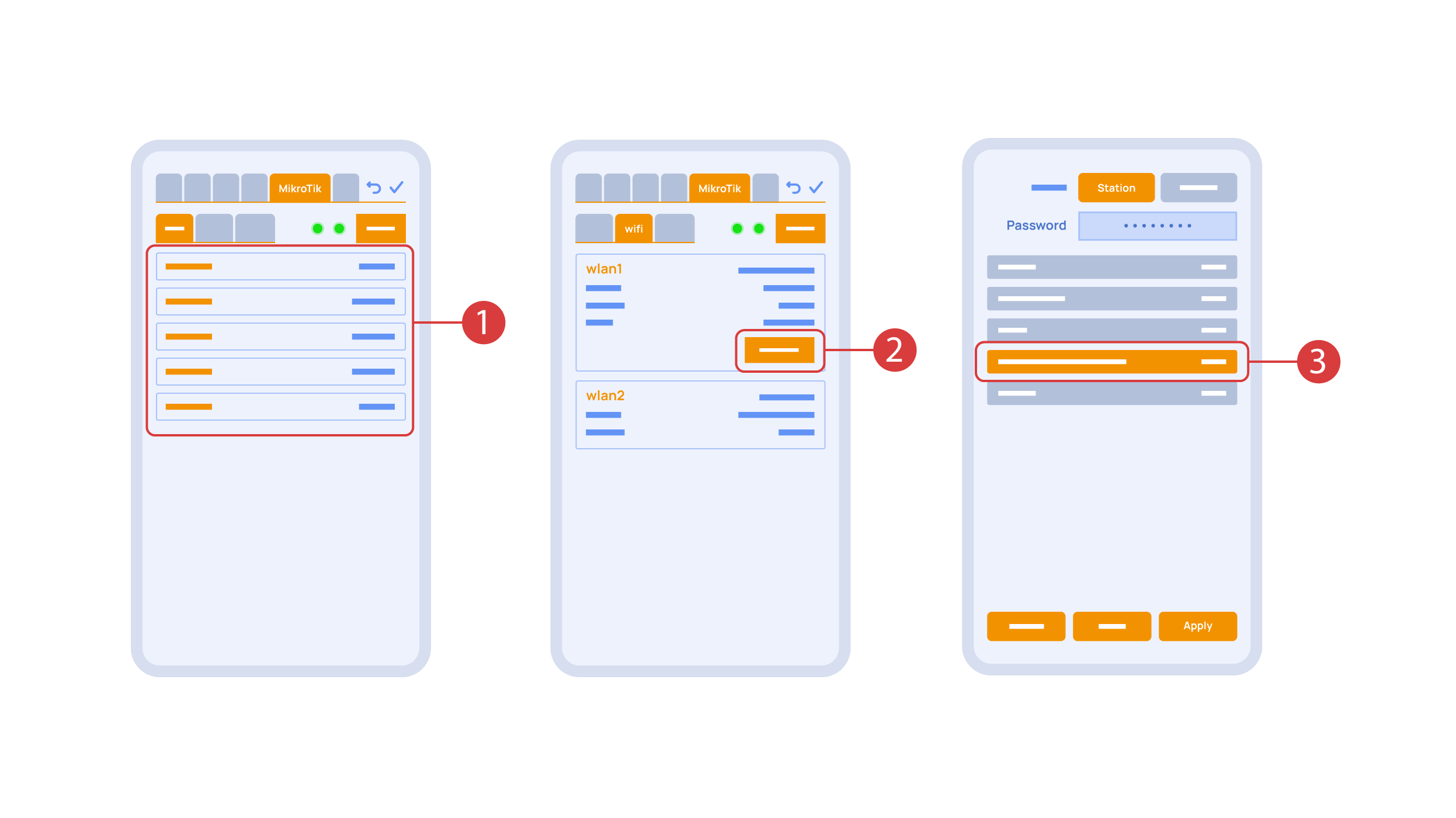
In the ‘Backups’ tab ① you can see the list of saved configurations, which can be restored if necessary.

For cloud access to the device, you do not need any extra settings. The app detects the absence of the system in your local network and automatically establishes the connection via the cloud.
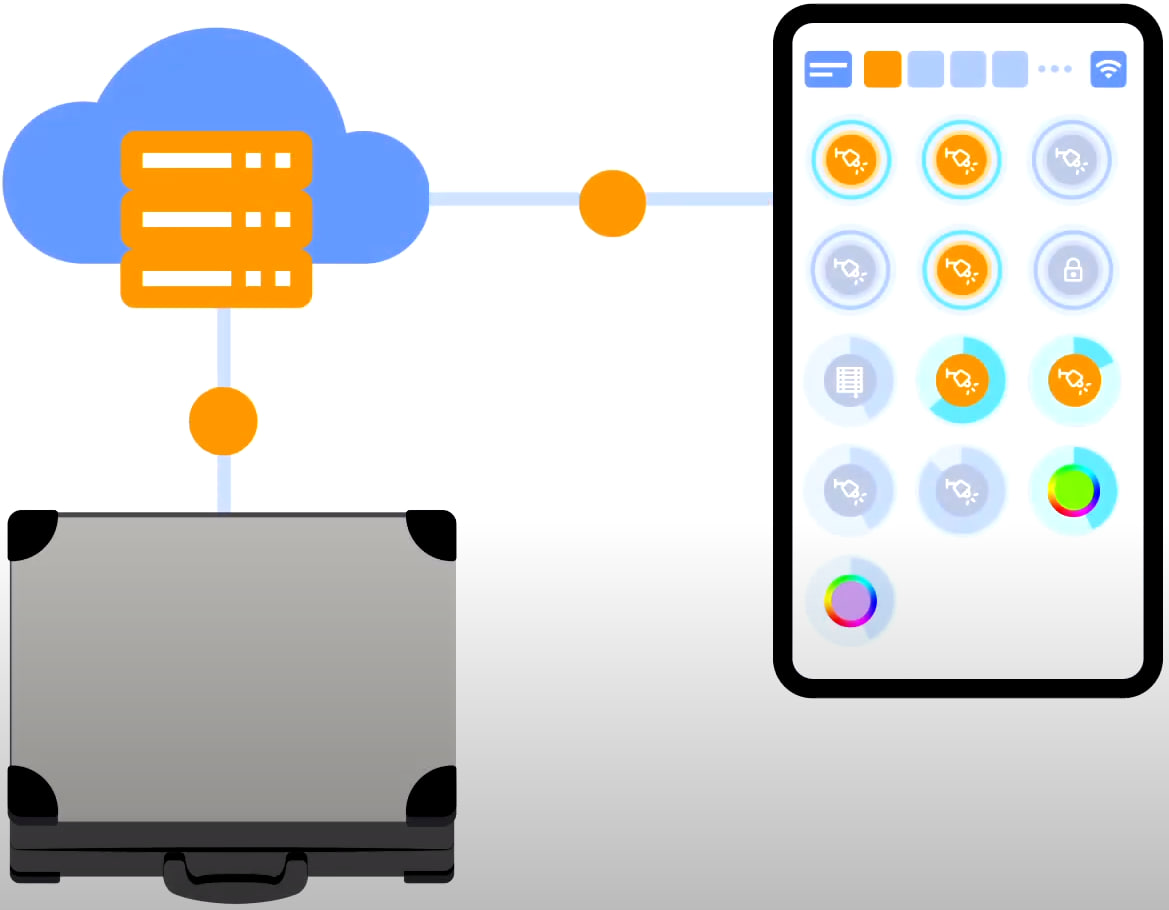
We thank you for watching this tutorial! If you have questions or need extra help, please do not hesitate to refer to our technical support team. See you in the next episodes!